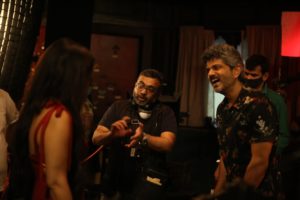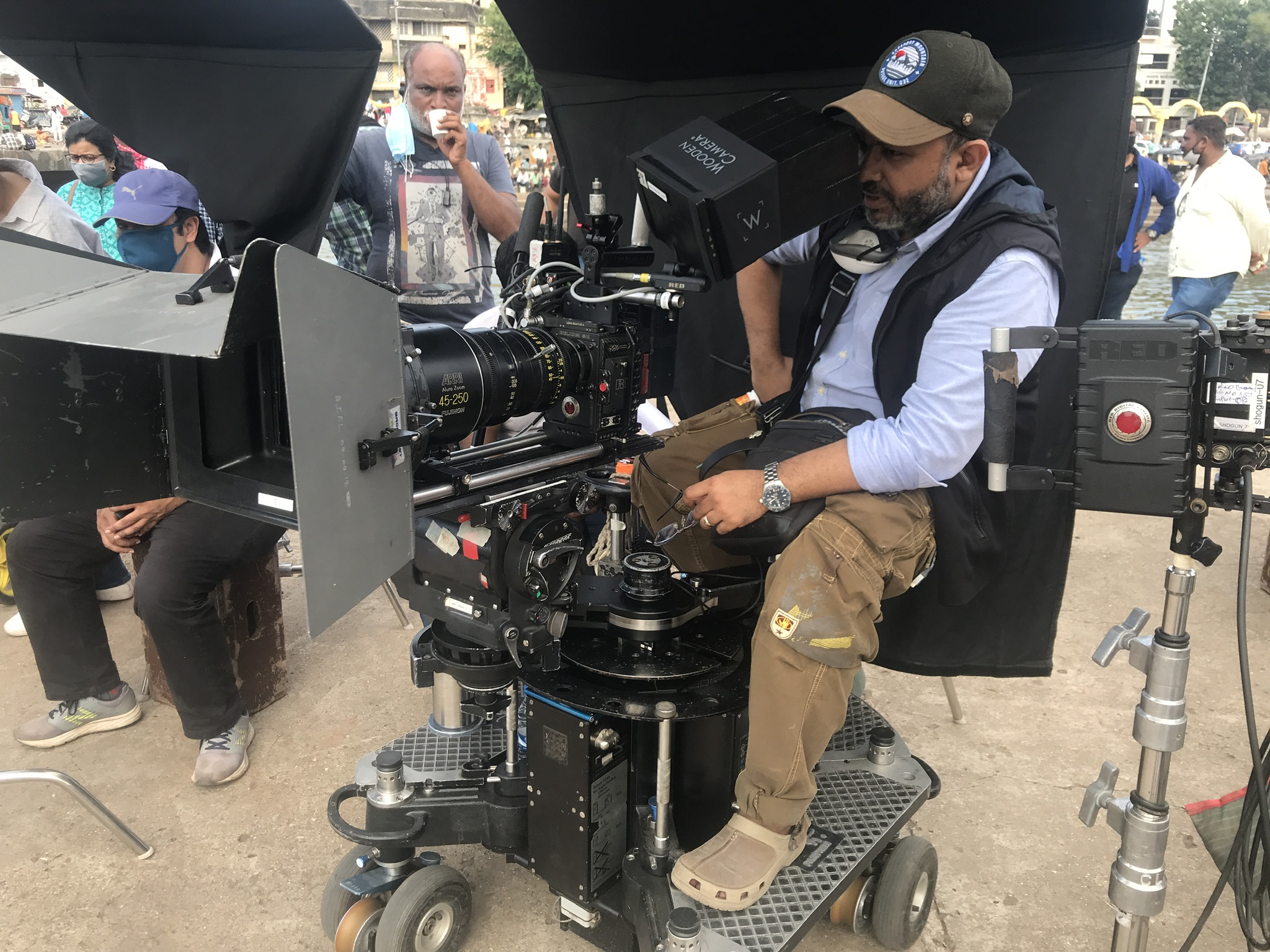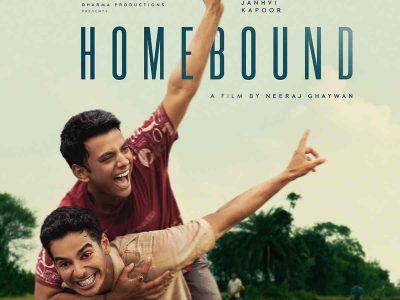Filmmaker Indrajit Nattoji talks about his upcoming Zee5 film Aafat-e-Ishq and how the pandemic has given an alternative to Bollywood’s star-led system
Writer-Director Indrajit Nattoji shot his upcoming film for Zee5 titled Aafat-e-Ishq when Covid-19 was at its peak. This is Nattoji’s second feature film following his directorial debut Aagey Se Right starring Shreyas Talpade, Mahie Gill, and Kay Kay Menon. Aafat-e-Ishq, a remake of the Hungarian film Liza, the Fox-Fairy, stars Neha Sharma, Amit Sial, Namit Das, Deepak Dobriyal and Ila Arun in the pivotal roles. An alumnus of the National Institute of Design, Ahmedabad, with specialisation in Film and Graphic Design, Nattoji has directed and produced over 400 TVCs.
In this interview, Nattoji talks about Aafat-e-Ishq, trend of remakes, the tendency of contemporary storytellers to set films in the Indian heartland as opposed to big cities, and the rise of OTT during Covid-19.
Excerpts:
What can we expect from Aafat-e-Ishq? Tell us about the creative vision behind it.
Aafat-e-Ishq is a dark dramedy set in a small town of the Indian heartland. It is the story of a young woman who embarks on a quest for true love. She soon finds herself to be the prime suspect for a series of deaths while an ancient curse looms large. The film has supernatural elements with a film-noir / whodunit twist.
Official remakes are in fashion these days. How do you look at remakes? Tell us about your approach in remaking Liza as Aafat-e-Ishq.
Reboots, remakes and revivals are not a new trend, but, yes, they appear to be enjoying resurgence in the worlds of film and television. Akira Kurosawa’s films have been made several times over by major Hollywood directors. I see remakes more as a springboard of inspiration which allows me to re-interpret and tell a story that has caught my imagination, my way.
The Zee Studio Originals team had acquired the rights for the award-winning Hungarian film Liza, the Fox-Fairy. During one of my meetings with them, they pitched an Indian remake of the same to me. I loved the film and its quirky black humour and it connected with some of my favourite story-telling genres that I have always been a fan of—fantasy, burlesque, and romantic comedies.
I looked for a co-writer who is more of a story writer as opposed to a film writer. This was to bring in a fresh storytelling style for the adaptation, uninhibited by Bollywood film writing tropes. I finally collaborated with Neha Bahuguna on the script and soon came up with an original script for Aaft-e-Ishq. I can safely say that Aafta-e-Ishq is now an adaptation of Liza and not just a remake. It has been rebooted with some new twists, great original music and quirky Indian small town characters.

How different is Aafat-e-Ishq from Liza? What all have you kept intact and what all have you changed in your film and why?
The film Liza, the Fox-Fairy is set in 1970s Hungary, at the onset of a capitalistic consumerist society. The obvious approach would have been to ‘remake’ the film by setting the story in old Goa with a Christian family. To tell our version of Liza, we decided to set the film in a diametrically opposite universe—the quintessential Indian heartland. The challenge was to reinterpret a story with an East-European socialist sensibility to that of the small-town Hindi heartland. In order to minimise Liza’s influence on our script, I only saw the film twice—once as an audience and the second time as a filmmaker. There are some elements which have been retained from Liza but I think it is too soon to reveal the plot at this time. Let us wait for the trailer!
A lot of contemporary films are set in the Hindi heartland. What is the creative / aesthetic reason behind setting a film in a small town as opposed to a big city?
The reason why contemporary films are set in the Hindi heartland is actually simple. Indian Urban cities are nothing but a settlement of people who have migrated from small towns and villages to earn a living. When one tells stories inspired from their roots the audience connect is tremendous. Moreover, for filmmakers like me, the humour and idiosyncrasies of characters in a small town are far more interesting and entertaining than the millennial life one lives in big cities.
There has been a long hiatus since you came out with your first film Aagey Se Right. What led to the long delay? What kept you busy during the interim?
Aagey Se Right was my debut film that was made with a lot of heart. I learnt a lot from the experience and am lucky to have a theatrical release in my career. But it also made me want to hone my filmmaking skills further. So I went back to making advertising films (with my production house Blink Pictures) and to writing stories and scripts.
Meanwhile, I have conceived and produced large scale film installations for IME, India’s first experiential museum of Indian music in Bangalore. More recently, I have created a hand-painted music video for Kavita Seth’s ‘Rangi Saari‘. I continue my practice as an artist and have exhibited my art works in art galleries of Kolkata and Mumbai.
How do you look at OTT platforms as an alternative to film distribution/exhibition? Tell us about your experience of making a film for Zee5.
I feel that now with the advent of OTT platforms and all encompassing social media, the Indian entertainment audience has evolved and matured drastically. There are many more opportunities for directors like me to tell eclectic stories with edgier and more diverse subjects. At last, content is indeed the king. I guess everything has a time and I am glad I waited it out.
The creative team at Zee5 has been very supportive in my vision for Aafat-e-Ishq every step of the way. We shot in extremely challenging times, at the height of the pandemic. However, the shoot was possible because of the incredible Zee Studios production team and a stellar cast which believed in the film and was completely dedicated.
The global impact of Covid-19 pandemic has proven to be detrimental to cinema. How do you look at the future of cinema given the damage that has already happened?
I think the pandemic has taught us not to take our audiences for granted, and in a way has created an alternative to Bollywood’s star-led system. The shutting down of theatres has kick-started credible platforms and opportunities for indie films and story-led cinema, where the audience looks for a well-told story with good performances. However, once the film theatres open, I feel that both these film business models will subsist together, bringing back the era of the 1950-60s Indian ‘parallel’ cinema.
(Cover: Filmmaker Indrajit Nattoji)





